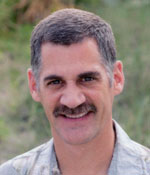
When I was flying the 180-horsepower Diamond DA40 as an Air Force instructor at the Air Force Academy in Colorado, summertime flying was always interesting with increasing density altitudes. Field elevation is 6,572 feet, so it didn’t take much heat above standard day temperatures to make aircraft performance suffer. To compensate we would only take off with partial fuel on warmer days, and then cease takeoffs when density altitude exceeded 10,000 feet.
 The most exciting takeoff I witnessed at the academy airfield was not due to density altitude but to some very weird winds. The airfield has four runways: Three are parallel, essentially running north-south, and are the primary runways; and the fourth is a crosswind runway that runs close to east-west. I was No. 3 for takeoff, we were using the south runway, and tower was reporting winds out of the south at around 15 knots. The windsock near the holding area confirmed this report.
The most exciting takeoff I witnessed at the academy airfield was not due to density altitude but to some very weird winds. The airfield has four runways: Three are parallel, essentially running north-south, and are the primary runways; and the fourth is a crosswind runway that runs close to east-west. I was No. 3 for takeoff, we were using the south runway, and tower was reporting winds out of the south at around 15 knots. The windsock near the holding area confirmed this report.
The No. 1 aircraft was cleared for takeoff, and I watched the crew accelerate and then takeoff normally, although takeoff roll might have been a little long. After becoming airborne they climbed to around 30 feet agl and leveled off slightly, probably to gain some airspeed in order to retract the flaps. But then they stayed at 30 feet agl as they passed the departure end of the runway, and continued at that low altitude for at least another half mile. From my position in the hammerhead, I could barely see their tail as it was obvious they were struggling to gain airspeed to start a climb. Eventually they were able to climb and the event was over, but not before the instructor reported to the tower a decreasing airspeed wind shear at the departure end of the runway. Tower asked the now-No. 1 aircraft if they were ready for takeoff. The reply was a simple: “I think we’ll wait.”
It was then that I took a look at the other windsocks on the field. Our windsock at the approach end still showed the winds from the south. The windsock at the departure end of the runway was pointing in the opposite direction and showed the winds from the north. But that wasn’t all. One windsock for the crosswind runway was pointing east and the other was pointing west. I couldn’t believe my eyes, but windsocks don’t lie. When I talked with other instructors who had been around longer than me, they said this was not the first time they had seen this happen.
My home airport doesn’t get this crazy with the winds, but we do have some odd winds at the approach end of Runway 15 due to the hangars at the northeast end of the field. Your final approach and transition to the flare can look beautiful, but every now and then a weird gust will seem to come from nowhere and put you and your flying machine in an unexpected position.
There are a few lessons to be learned here. The first is to mentally and physically fly the airplane from engine start to engine shutdown, and never assume that any takeoff or landing will always be “routine.” Next, when possible, try to talk with local pilots about unique wind and weather patterns at their airports. Finally, realize that wind sensors for the AWOS/ASOS/tower winds don’t necessarily coincide with the windsock(s) placed on the field. Don’t just listen to wind reports. Look at what the wind is doing as well.
Larry Brown of Colorado Springs, Colo., is a retired Air Force F-15 pilot who is using the lessons he learned as a fighter pilot as a GA pilot in his Cessna P210. Brown, who has 2,600 hours total time during his 32 years of flying, also was an instructor pilot and flight examiner in the Air Force T-38 and instructor pilot in the T-52, the military’s version of GA’s Diamond DA40.
See previous installments of “Fly like a fighter.”



